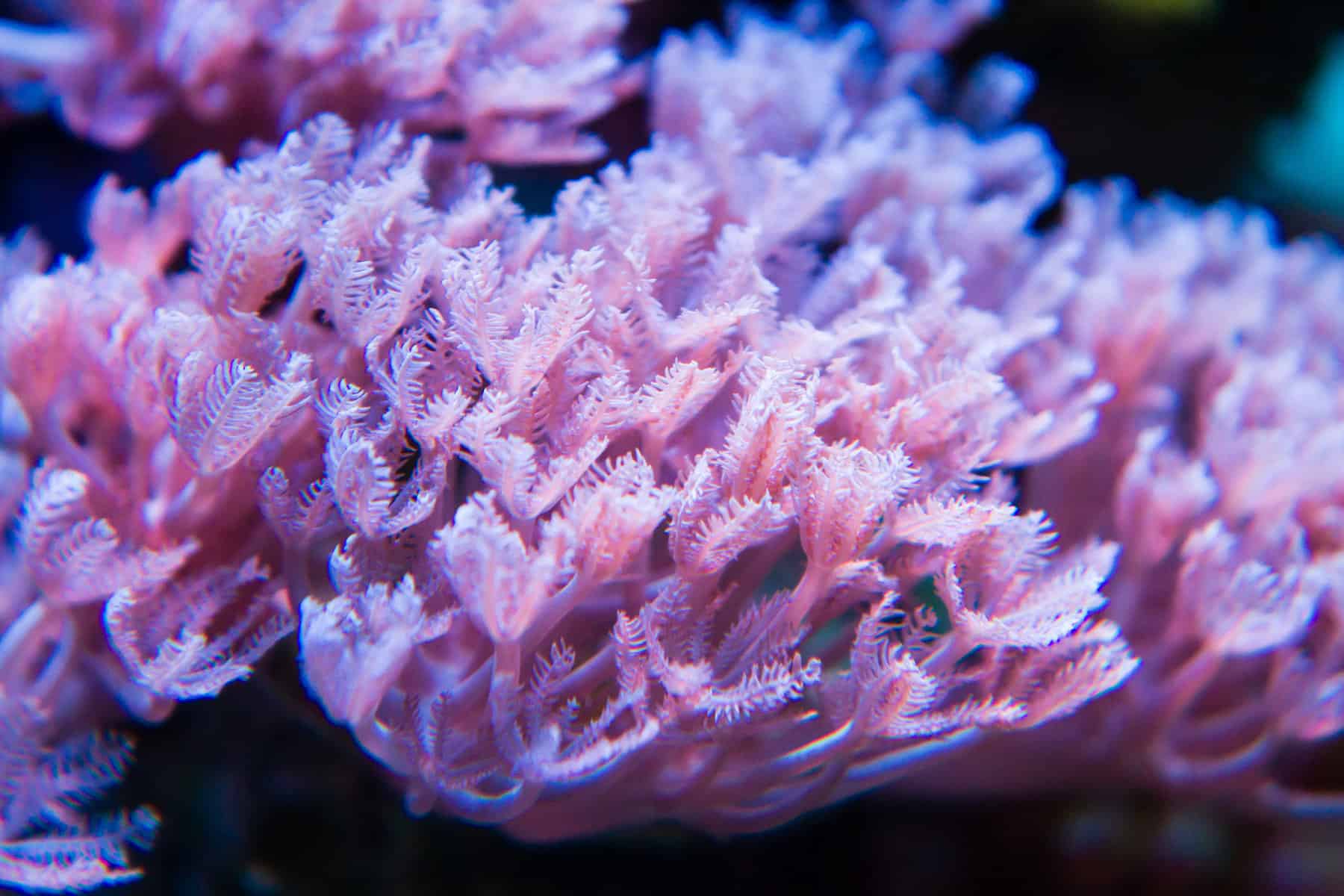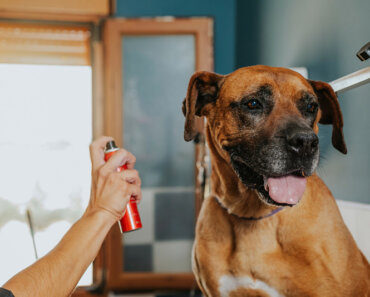Amateur marine aquarists may be envious of coral reef tanks. After all, it’s common knowledge that corals require ultra-pure water, and even the smallest mistake can result in significant financial failure.
What if there was a low-cost, beginner-friendly coral that grew like weeds? Xenia coral is intriguing, gorgeous, and easy to find making it an excellent entry into the world of soft corals species.
What is Xenia Coral?
Xenia coral goes by various names like pulsing xenia coral, pom pom coral, and pulse coral. Pulse xenia corals are among the most appealing corals, popular among reef aficionados.
The viewer is practically mesmerized by their throbbing heads and the graceful moving of their polyps in the water.
You can direct their growth in a reef tank since they grow in the direction of the water flow moving towards them. Directing the coral to climb your aquarium’s rear wall provides a fascinating spectacle.
Origin
Pulsing xenia coral is native to the Great Barrier Reef and Indonesia. Most of the corals on the market nowadays are aquaculture, which is wonderful because aquaculture corals develop much faster.
Habitat
The xenia genus contains approximately 60 species. Xenia coral can be found in shallow seas, under bright light, and at moderate to high tide levels.
The corals even flourish in polluted natural streams and can be found throughout the Red Sea and the Indo-Pacific region. These soft coral species are known to have excellent nutrient levels, making them easy to care for in a typical novice reef tank.
Note that excessive water movement will inhibit the coral polyps from opening, making it more difficult to see the pulsing rhythm that inspires their name.
Colors
Purple is the most common color for these corals on the market. Some have a little more pink or blue hue, while the rarest corals have a brown and white body.
Purple is a rare hue in corals, and it looks fantastic in a reef tank.
Caring for Pulsing Xenia Coral

If handled correctly, the xenia coral species can be rather easy to care for. If you must touch them, do it quickly and with gloved hands. When touched, the coral becomes stressed and creates a lot of mucus, which attracts bacteria and causes death.
Though shipping is the most challenging aspect of their care, these corals can be highly resilient and you’ll see rapid growth once settled in your aquarium.
Aquarium Size
The pulsing xenia coral is quite versatile when it comes to tank size. They can be kept in any size aquarium, from tiny reefs to big display tanks.
The xenia coral is almost entirely photosynthetic, so consider this when choosing a tank. They don’t feed like anemones and other corals, but they do require a lot of light.
As a result, we would recommend shallow tanks for these corals. Long-style tanks, such as a 20-gallon tank, are suitable because the depth does not reduce lighting.
If your aquarium is too deep, your xenia may face challenges growing or will become lanky to reach the light. You may think your coral is doing well because it’s growing tall, but in reality, it’s struggling. The coral may even separate to seek a more suitable location.
Keep in mind that these corals are quite invasive. One pulsing xenia may cover the surface of a modest aquarium in just one year under the correct circumstances. A happy xenia colony can overwhelm a great majority of slower-growing corals.
A larger tank is recommended to allow your pulsing xenia coral to grow without crowding out other reef animals. If you don’t want to continuously maintain your tank, a xenia-only tank may be the best option.
Aquarium Care
The pulsing xenia coral requires stable tank conditions to thrive.
Water changes of 20 percent per month or 10 percent every two weeks are required, while it is suggested that conducting 5 percent water swaps weekly can refill many of the necessary ideal conditions for your coral.
Soft corals also require adequate chemical levels to thrive properly. Adding trace minerals to the water helps retain beneficial nutrients. Ensure you maintain a pH of at least 8.3 throughout.
Iodine can be used as an additive trace mineral, but use it cautiously and ensure not to surpass the manufacturer’s recommended amounts. When beginning with a fresh colony, use half the recommended dosage and gradually increase it as the colony grows.
The correct amount of iodine can be determined by observing the growth of diatoms and brown algae in your aquarium. The glass of a well-maintained aquarium only needs to be cleaned of brown algae once a week or even longer. Excessive algae bloom indicates that there is too much iodine in your tank.
Water Quality
The ideal water quality for your xenia coral is critical to ensuring it will have a long and prosperous life.
Warmer temperatures of 75-82°F and a specific salinity of 1.023–1.025 are ideal for xenia corals. While nitrates and other criteria for xenia coral should not be at zero parts per million, a few parts per million will help your coral flourish without affecting other organisms.
In addition, a moderate to slow water current is recommended for your xenia coral.
You’ll notice that your coral makes pulsing actions, which are intended to create a continual flow of water in the coral. This is because they rely only on photosynthesis and dissolved nutrients to survive.
Feeding
Because xenia is a photosynthetic coral, it requires aquacultured blue xenia coral lighting. The coral’s ideal light levels are moderate to low because most of their nutrients are absorbed from the water.
Since xenia corals do not need physical food, larger quantities of dissolved nutrients are required in the water. These include phosphates, nitrate, organic compounds, and others that are typically considered aquarium pollutants.
Tankmates and Behavior
Xenia corals are a peaceful species. They don’t sting, digest, emit toxins, or assault surrounding corals with sweeper tentacles.
However, xenia corals mucus is not completely safe, but nearby corals in your tank could develop an irritation to it. Xenia corals may also outgrow slower-growing corals, leaving plenty of room between the xenia colony and the next coral.
Keep a distance of 4-5 inches between your xenia corals and the other corals in your aquarium.
This way, the xenia can be cut down so it has room to grow and move position if needed. Many pulse coral keepers recommend having your xenia coral in a species-only tank to give them as much space as possible.
You can also keep xenia coral with more aggressive corals like torch coral, hammer coral, and other large polyps stony (LPS) corals. LPS corals are more likely to fight off obnoxious neighbors and employ several defenses like stinging tentacles to keep xenia corals at bay.
A wide variety of marine species can coexist with xenia corals. They can cohabit with any reef-safe species, clownfish included.
Fragging or Propagating
It’s simple to frag xenia coral. Because it will grow over almost any substrate, the quickest way to frag it is to put some live rock debris or shells next to it, and the colony will bloom straight onto your planned frag substrate.
Snip or pull away the rubble to create an easily transportable frag to grow a colony in a different part of the tank or to give to a friend. You can also cut the xenia colony off with a blade to trim it.
It may be difficult to adhere a coral cutting to a substrate, but you could use a toothpick, rubber band, or even a plastic container to help it rest naturally on some debris.
Possible Problems
The xenia genus is prone to a cyclical death corresponding to lunar events. Some colonies may be saved by clipping the tops of dying colonies and allowing them to establish independently.
Keep an eye out for a small crab that takes on the hue of your xenia. The xenia crab is frequently found in pairs on top of the closed heads at night, slowly eating away at the pulse coral. Polychaete worms can eat your xenia as well.
The xenia species does not travel well. They create a lot of mucus when they are anxious, which attracts bacteria that become trapped in the transportation container and eat the xenia.
However, they can be shipped dry for short distances and under conducive weather conditions for no longer than 12 hours. This helps keep bacteria levels down from the mucus they create.
The coral will still produce the protective mucus layer, but the advantage is that they will not be exposed to contaminated shipping water.
Xenia Coral Pros
- The pulsating xenia coral is tough and adaptable to various aquarium environments.
- Fragmentation is simple.
- It is non-aggressive coral.
Xenia Coral Cons
- It may be incredibly hardy in certain tanks, while it may be difficult to develop in others.
- It may grow so quickly that you mistake them for weeds.
Common Questions
What Do I Feed Xenia Coral?
Since xenia coral feeds itself via photosynthesis, there is no need for direct feeding.
Although stable water parameters are essential, greater phosphates and nitrates can speed up the growth of a pulsing xenia coral.
Do Xenia Corals Close At night?
Yes, it is very normal for xenia corals to close up at night.
They eventually open back up and continue pulsing.
Why Is My Xenia Coral Dying?
Your pulsing xenia could be dying for a variety of reasons.
Examine your water parameters first. Second, there could be issues with your aquarium’s lighting. Third, poor water quality could be why your xenia coral is dying. Finally, it could be deficient in certain nutrients.
Where Should I Place My Xenia Coral In My Tank?
Your xenia coral can be placed almost anywhere.
You should be aware that these corals need moderate to low lighting so you should place them near the bottom or darker areas of your tank especially if you have a bright aquarium.
Final Thoughts
Xenia coral is an intriguing reef that will give your aquarium a beautiful look.
Xenia coral is a fantastic option for new hobbyists and with the correct conditions in place, the coral will thrive and live a long life!


























